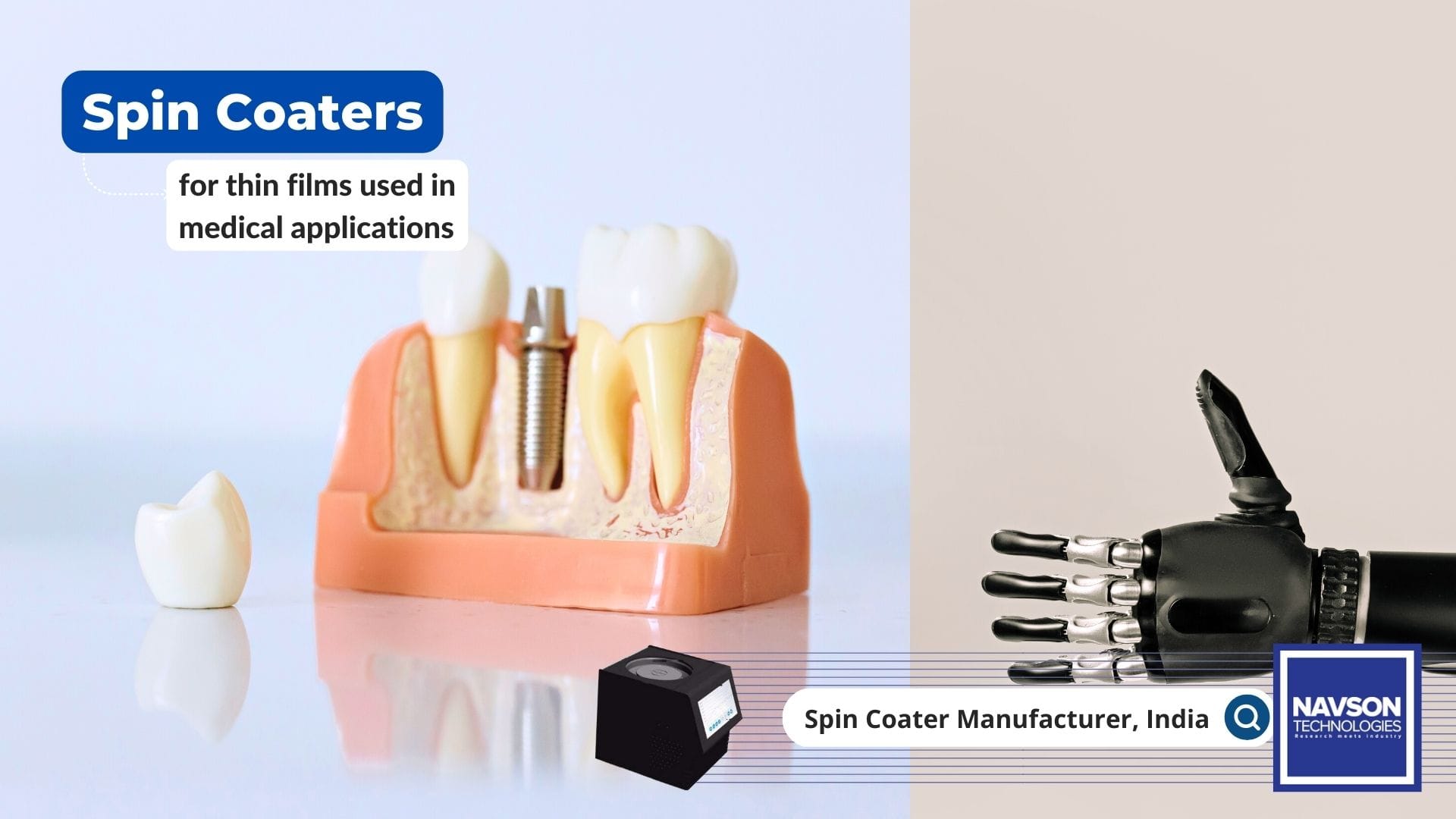Applications Of Thin Films In Biomedical Field
In the area of biomedical science, various types of biomaterials are used for a number of applications. One of the most important components used in biomaterials are thin films. As these films are materials with one dimension in the nanometer range. They can be used for a number of biomedical applications, such as drug delivery, tissue engineering, and biosensors.
Today thin film coatings are an important part of many biomedical devices and applications. They can provide a barrier to protect the underlying device from the environment, allow for controlled release of drugs or other agents, or provide a means of electrical stimulation. A variety of coating methods are available, each with its own advantages and disadvantages.

Spin Coating Of Thin Films For Biomedical Applications
The most common method to fabricate thin films, is spin coating. Spin coating is a method in which a solution is sprayed onto a rotating substrate. The centrifugal force causes the solution to spread out evenly over the substrate, resulting in a thin and uniform film. It is a simple, versatile, and scalable method that can be used to coat a variety of substrates with a range of materials, including metals, semiconductors, and nano materials.
Thin films uses in biomedical applications.
One of the more well-known biomedical applications for thin films involves using stainless steel rods to replace segments of bones that have been crushed during accidents. These rods can slip out from from within the bone-end during heavy exertion. So researched used inert gas PVD, wherein bone material was dissociated and re-deposited on stainless steel rods in the vacuum chamber. These bone-coated rods accepted osteological knitting better than any previous attempts, resulting in much better long-term performance.
Another application is in diagnostic applications, where “Lab-on-a-Chip” type devices with superhydrophobic surfaces can be used to favor selective deposition of molecules or cells, or the movement of fluid from one area to another. Here, the wettability of a material’s surface plays a significant role in how fluids interact with such surfaces.
Would you like to share more applications? Do send you story here:
Commonly asked questions
- new emerging technologies
- applications of nanomaterials
- nanoscience and nanotechnology
- nanotechnology in food
- nanotechnology in electronics
- nanotechnology in dentistry
- nanotechnology in textiles
- nanotechnology in biotechnology
- nanotechnology in engineering
- nanotechnology in physics
- nanotechnology in robotics
- use of nanomaterials
Most used lab equipment
- spin coating machine
- magnetic stirrer hot plate
- dry bath incubator
- laboratory fume hood
- laboratory water bath
- orbital shaker incubator
- centrifuge machine
- laboratory colorimeter
- laminar air flow cabinet
- laboratory microscopes
- lab weighing balances
- ph meters for lab
Spray Pyrolysis Process: Unveiling a World of Advance Materials CNTII02
Perovskite Solar Cells Research with Cost-Effective Spray Pyrolysis CNTII02P1
Best Spin Coating Machine Manufacturer In India – Navson Technologies – CNTII01
Solar Cells Science Lighting Up Brighter Energy Future – CNTII01
Spin Coater Magic Not Required In Alchemy of Ultrasound and Nanoemulsions
The Joyful Lifestyle Scribe
Hey there! I’m Geeta, a wordsmith of sorts who loves to read, write, and share all things about sustainable living. Aside from a career as a content specialist, I like to weave tales about embracing a healthier, happier lifestyle. My pen dances to the rhythm of eco-friendly choices that you would assumingly like too, and the joy of living well. Let’s explore the journey to a greener, more fulfilling life together!

Disclaimer: Content on this site is provided for general informational and educational purposes only and is not a substitute for professional advice. It’s not a substitute for professional advice. So, before making any big decisions, always consult with the experts in the specific field. We’re here to spark curiosity and inspire, but your best bet is to get personalized guidance for your unique situation. Stay awesome and informed!






